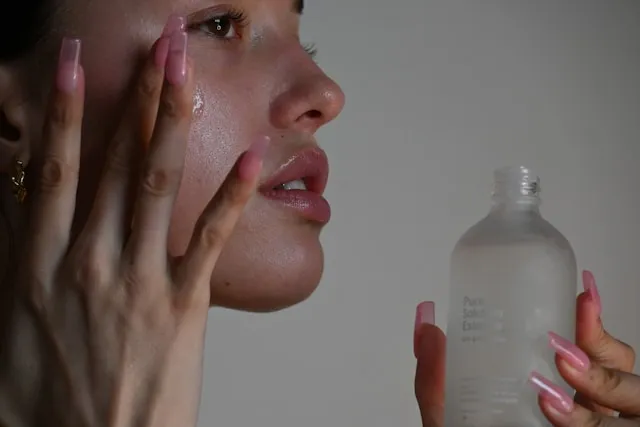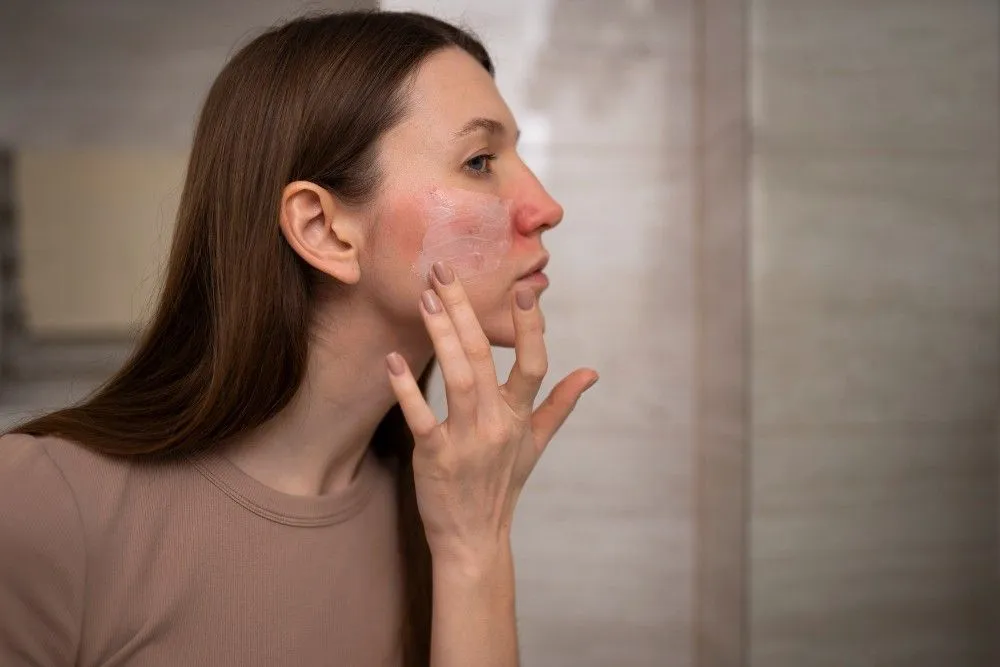Botox (Botulinum toxin) is known for its ability to paralyze muscles and smooth out fine lines and wrinkles. One of the most common questions people ask before their first session is How long does Botox last? Whether you’re aiming for smoother skin or maintaining a youthful look, understanding Botox longevity, aftercare, and best practices can help you get the most out of your treatment.
This guide covers:
- How long Botox lasts & what affects its duration
- Proven tips to extend Botox effects
- Essential do’s and don’ts after treatment
- Common side effects & how to minimize them
Let’s start exploring!
What is Botox & How Does It Work?
Botox (Botulinum toxin) is a neurotoxin that temporarily paralyzes muscles, reducing the appearance of fine lines and wrinkles.
How it works: Botox injections, when injected in the targeted area, block the nerve signal to reach the muscles, thus preventing muscle contractions. This, in turn, relaxes the muscles and smooths out fine lines and wrinkles. Depending on the area of concern, you will require the session accordingly.
Uses: Botox injections are used for cosmetic purposes to prevent fine lines and wrinkles in different areas of the face. Also, they are utilized for medical reasons to treat several health issues such as eyelid twitching, crossed eyes, or excessive muscle contractions.
How Long Does Botox Last? Understanding the Duration
Research says that Botox results typically last for 3-6 months. Once the botox effects subside, the toxins begin breaking down, making the muscles move again. The exact duration can vary from one person to another based on the following factors:
-
Treatment Area: Botox injections may subside faster in areas with stronger and extremely active muscles such as frown lines or the forehead.
-
Dosage: Higher doses last for a longer period but they carry the risk of stiffness if overdone while smaller doses may dissolve sooner.
-
Metabolism: Individuals with faster metabolism may break down the botox more rapidly, wearing off the effects very soon.
-
Age: Younger individuals may see long-lasting effects as their skin has more elasticity and muscles are less active.
-
Frequency of Treatments: With time, regular use of the treatment may show long-lasting effects as the muscles get trained to relax.
-
Activity Level: Too much exercise may lead to more muscle contractions that cause Botox to dissolve quickly.
-
Number of injections: Several injections in the same targeted area might increase the extent of the effects.
-
Stress: More stress or illness can quickly wear away the effect of Botox.
- Sun exposure: UV rays break down collagen, making wrinkles reappear sooner.
Your Botox duration depends on lifestyle factors, metabolism, and how often you receive treatments.
How Long Does Botox Take to Show Results?
Botox typically takes 2 to 3 days to show its effects with noticeable results seen within 4 to 5 days. You can see the full visible effects in about 10 to 14 days. It is crucial to understand that the results of Botox treatment can vary from one individual to another depending on certain factors like the amount injected, area of treatment, metabolism, and age.
Over time, the effects of Botox injections wear off and muscles regain their movement, making the fine lines and wrinkles to appear again that require Botox treatment again.
Do and Don’ts After Botox Treatment
Following proper aftercare ensures you get longer-lasting results and avoid complications:
|
Do’s |
Don’ts |
|
Apply sunscreen each day to prevent sun damage. Use a warm compress or ice packs to relieve bruising and swelling but avoid direct pressure. Use a mild cleanser 2 times per day and pat dry the face gently using a clean towel. Drink a lot of water to flush out toxins from your body. Follow up with the doctor in case of unusual side effects or any concerns. |
Don't practice strenuous exercises or take saunas or hot tubs for 24 hours. Don't clean the face or apply any skincare product for at least 24 hours after the procedure. Do not lie down for about 4 to 6 hours. Avoid rubbing, massaging, or touching the treated areas. Do not smoke or drink alcohol for 24 hours post-treatment to avoid serious complications. Do not use harsh products such as glycolic acid or retinol for about 2 weeks post-procedure to avoid redness and irritation. |
These precautions prevent Botox from spreading unevenly and help maintain smooth, natural-looking results.
Tips to Make Botox Last Longer
While Botox is temporary, you can extend its effects with these expert tips:
-
Prepare the Right Way
Preparation like avoiding anti-inflammatory drugs (eg. ibuprofen) and alcohol before and after the Botox session can lower the risk of bruising and maximize results.
-
Avoid Exercise for 24 Hours
Do not perform any type of exercises, especially strenuous ones as they can boost blood flow which can distribute botox from the treated area. So avoid exercise for about 24 hours post-treatment.
-
Stay Upright After Treatment
Staying upright can allow effective settling of Botox in the treated area, reducing the risk of Botox impacting the other areas.
-
Moisturize the Skin
Apply quality moisturizer on your face to smoothen the skin as hyaluronic acid and collagen in it can plump up the skin and reduce the breakdown of Botox.
-
Avoid Abrasive Skincare Products
Do not use any harsh products such as retinoids or glycolic acid as they can cause skin irritation.
-
Avoid Excessive Sun Exposure
Too much sun exposure can break down collagen which can make fine lines and wrinkles reappear again. So avoid the sun and use broad-spectrum SPF 30 sunscreen when outdoors.
-
Consume Healthy Diet
Eat foods rich in antioxidants like green veggies and fruits and proteins like yogurt to maximize the treatment's effects and promote healing.
-
Stay Hydrated
Drink a lot of water throughout the day to maintain digestion, cell functions, and circulation. This contributes to the longevity of the treatment's result.
-
Avoid Smoking
Smoking can lead to skin aging and wrinkles and also make the skin thin. So, avoid smoking or seek help from doctors if you find it difficult to quit.
-
Manage Stress
Stress can make facial expressions more visible which may hinder the Botox effects. So, practice stress-relieving techniques like medication and yoga for enhanced skin health.
-
Practice Facial Exercises
Practicing facial exercises can help tone and strengthen the muscles on the face. This, in turn, increases the durability of the Botox treatment's effects.
-
Get Quality Sleep
Getting enough sleep helps in the healing process. It aids in repairing body cells which helps improve skin health and maximize Botox's effects.
-
Take Zinc Supplement
According to a study, it is found that taking zinc supplements can increase the longevity of Botox and significantly reduce side effects. Zinc promotes collagen production which helps prevent fine lines and wrinkles.
Note: Along with these tips, make sure to get treatment from a professional and certified dermatologist for long-term Botox results.
How Often Should You Get Botox?
Typically, it is recommended to get Botox treatment every 3 to 4 months. However, the exact schedule will be determined by assessing your specific needs. In addition, how often you require Botox injections can vary depending on factors like metabolic rate, muscle strength, sun exposure, and stress level. Considering these factors the professionals will decide the accurate frequency of Botox injections.
If you’re new to Botox, start with lighter doses and gradually increase based on results.
Are There Any Side Effects of Botox?
Though Botox injections are generally safe, they can cause some mild side effects that improve in 1-2 days. Those effects include:
-
Pain at the treatment site
-
Swelling, bruising, or redness at the treated site
-
Flu-like symptoms
-
Headache
-
Neck pain
-
Upset stomach
-
Temporary eyelid drooping
-
Eye redness or irritation
If you experience severe side effects like difficulty breathing or muscle weakness, seek medical attention immediately.
Who Should Avoid Botox injections?
You should NOT get Botox if you:
-
are pregnant or breastfeeding
-
have allergies to ingredients present in the solution
-
are living with neuromuscular disease
-
have drooping eyelids
-
have weak facial muscles
Always consult a certified dermatologist before your first session!
Final Thoughts
How long does botox last is the common question of many people who are planning to get it for the first time. Its effects last for 3-6 months which can vary on frequency of treatment, dosage, body's metabolism, area of treatment, and so on. So, to maximize its effects, you need to follow aftercare tips like avoiding sun and strenuous exercises, staying upright, eating well, staying hydrated, and more. However, it's not a permanent solution for fine lines and wrinkles and needs re-treatment every 3-4 months.
Thinking about getting Botox? Consult a qualified dermatologist to discuss your skin goals and find the best treatment plan for you!
Read Also: Dysport vs Botox: An In-depth Comparison
Frequently Asked Questions
How long should Botox last on the forehead?
Botox on the forehead lasts for 3-4 months but the effects can vary based on muscle activity, dosage, metabolism, and tolerance level.
Do you age faster after stopping Botox?
No, you don't. In fact, you can enjoy long-lasting effects as the muscles become steadily weaker with repeated Botox injections.
What is the best alternative to Botox?
You can choose to have laser therapy, dermal fillers, neuropeptide, cryotherapy, chemical peels, and face patches to enhance your face appearance.
Should I use fillers or Botox?
For wrinkle issues caused by muscle movement, go for Botox while fillers are the better option for contouring and adding volume.
What should you know about Dysport vs. Botox?
Both are botulinum toxin-containing injections. The main difference is Dysport provides quicker results but Botox's effects last longer.
Reviewed by







